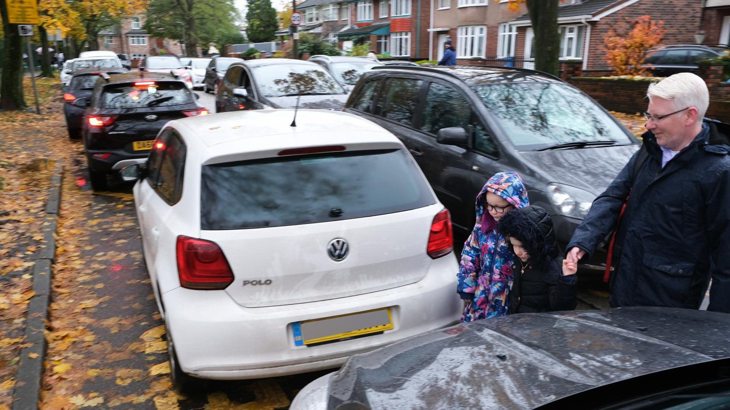The percentage of pupils travelling to school by car reached its highest ever recorded level in 2019, according to new data released by Sustrans Scotland.

The number of pupils reporting being driven to school in Scotland is at its highest recorded level
More than a quarter of pupils said they used private motorised transport to get to school each day.
With 23.8% reporting that they arrived by car – the highest level since the survey began in 2008.
And, despite remaining the most frequently reported mode of travel to school in Scotland, active travel fell to its lowest recorded level over the same period.
Of the 47.8% of pupils who reported travelling actively to school, 41.0% walked, 4.1% cycled and 2.7% scootered or skated.
Cycling to school is at its highest recorded level, whereas walking to school is at its lowest recorded level.
Hands Up Scotland Survey
The findings form part of the annual Hands Up Scotland Survey, an official statistic in Scotland.
Funded by Transport Scotland, the survey was carried out in September 2019 by Sustrans Scotland in partnership with all 32 Scottish local authorities.
We had 78.9% of all state schools in Scotland (excluding nurseries) took part in this year’s survey.
Bus use also continues to decline from 18.2% in 2010 to the lowest recorded level of 16.0% in 2019.
Meanwhile, the percentage of pupils travelling to school by park and stride (driven part of the way and walk the rest) increased to a high of 10.2%.
The findings also reveal a difference in active travel between independent and state schools.
Results show that 44.5% of pupils from independent schools are driven to school whereas 23.6% of state school pupils are driven.

Our Hands Up Scotland survey has been recording trends since back in 2008.
Recording trends in school travel
Commenting on the findings, Sustrans Scotland’s National Director John Lauder said:
"We want to thank all the schools who took part in the 2019 Hands Up Scotland Survey.
"The report is an incredibly useful indicator of trends in how children travel to school.
"Helping schools, local authorities and partners identify what needs to be improved to help more children travel actively every day.
"What we have seen during lockdown, with fewer cars on the road, is that people will change their behaviour if they feel their streets are safer.
"Travel patterns will have inevitably changed as a result of lockdown."
"Our streets cannot afford more congestion and air pollution and our children cannot afford more inactivity after months of homeschooling.
"Let’s bring back something better.
"We need to make it easier and safer for children, parents and teachers to travel in an active and sustainable way, once schools re-open in August.
"Only then will we be able to ensure that walking, cycling and scooting is seen as a viable alternative to the private car."





